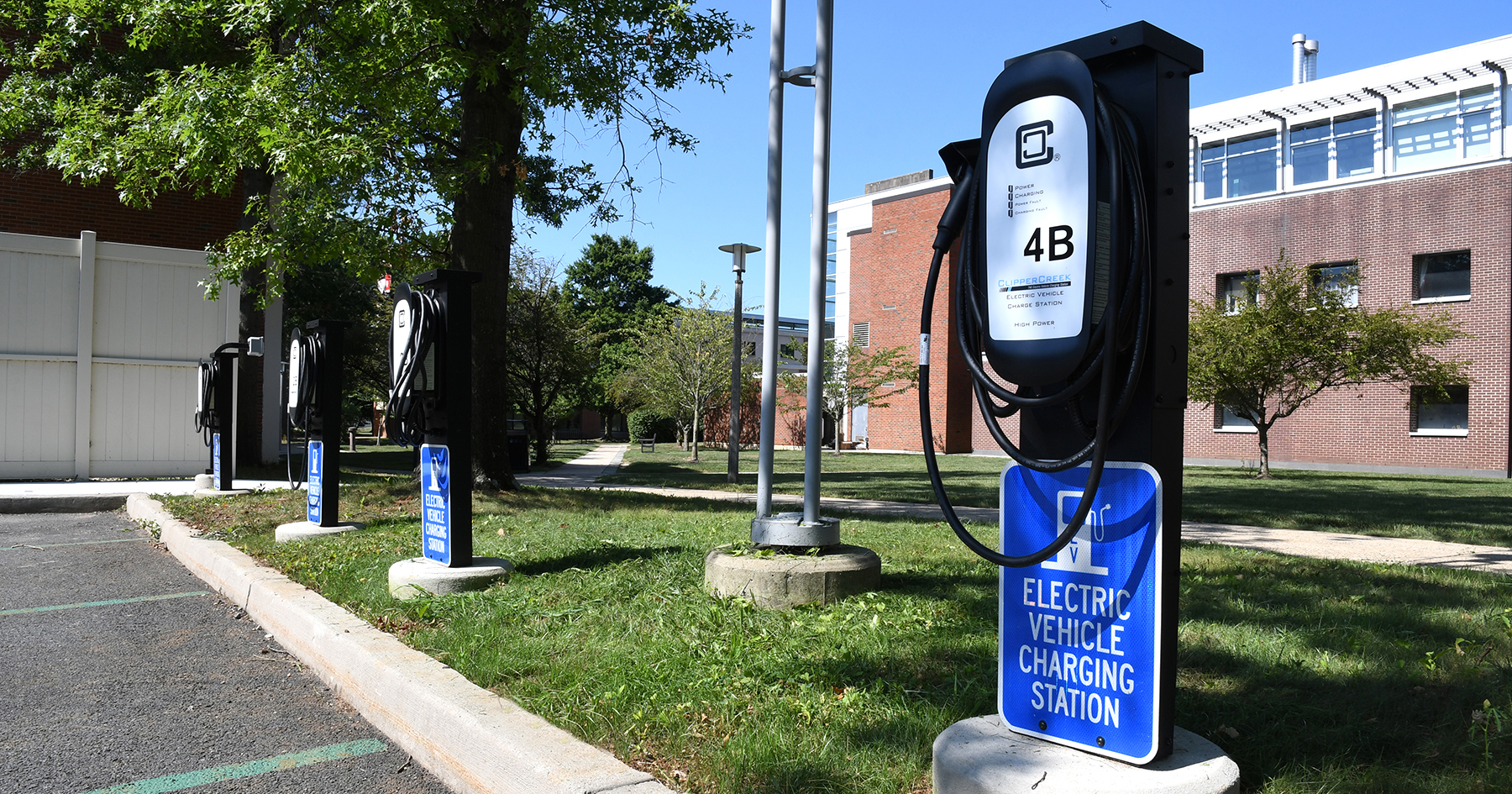Thursday, Jul 30, 2020
10 stations now available for the campus community
by Sophia Brana
Phase Two of Rider’s Charge At Work program was completed in May, bringing the number of electric vehicle (EV) charging stations on campus to 10.
The stations have two locations on campus; five are next to the General Services Building (GSB) and five are located behind the academic quad in a gated lot reserved for faculty and staff.
The program is an initiative by Rider’s Office of Sustainability to install and operate EV charging stations on the Lawrenceville campus. The first phase of the project was completed in 2017 with the installation of the first five charging stations on the side of the GSB.
In August 2019, Rider received an approval letter from the New Jersey Department of Environmental Protection (NJDEP) for a $25,000 grant for the program’s second phase. With that grant, Rider installed five more EV charging stations.
Since the installation of the first five chargers, there have been 22 charging accounts created for faculty, staff and student EV drivers. The account holders have the ability to use the Liberty Access app to start and stop charging with their phone as well as review their personal usage, and WhatsApp to communicate with one another about charger availability.
“Once the first chargers were installed, the number of users has been growing steadily,” says Rider’s director of sustainability, Melissa Greenberg.
For this initiative, Rider partnered with D’Angelo Electrical Contractor Inc. for all electrical work and equipment installations, and with Liberty Plugins for providing the equipment and software and commissioning the project. Rider and Liberty Plugins remain in an ongoing service agreement for equipment and software support.
Students who create EV charging accounts will have access to the charging stations next to the GSB; faculty and staff are able to use charging stations in both locations.
Greenberg says that the addition of EV charging stations will support the University’s goal of reducing carbon emissions. “The more carbon free modes of transportation there are, the better our carbon footprint will be,” she says. Transportation is the second largest carbon emitter after energy use on Rider's annual greenhouse gas emissions inventory.
The placement of the chargers near the GSB is a choice that will support future efforts in Rider’s sustainability plan to transition some of the University’s fleet vehicles to electric.
In January, New Jersey Governor Phil Murphy announced the state’s Energy Master Plan outlining strategies to reach the administration’s goal of 100% clean energy by 2050. The first strategy in the plan includes electrifying public transportation systems, using technology to reduce emissions and travel distance, and encouraging electric vehicle use.
Greenberg believes that, "contributing to the bigger effort in the state of New Jersey shows Rider's commitment to sustainability reaches beyond our own campus carbon reduction goals."
Rider has been recognized for two years in a row with the Platinum Award by the Greater Mercer Transportation Management Association (GMTMA). The award recognized employers for leadership in promoting and providing quality commuter benefits to employees. Rider was recognized for providing resources for EV drivers and for the effectiveness of app usage to support the Charge At Work program.
Greenberg hopes the program will convince those on the fence about purchasing an electric vehicle to do so, knowing that they will have charging stations available on campus. The growth of electric and hybrid plugin vehicle options by automobile manufacturers indicates that this is the future of transportation. It's also become easier to find certified preowned electric vehicles.

